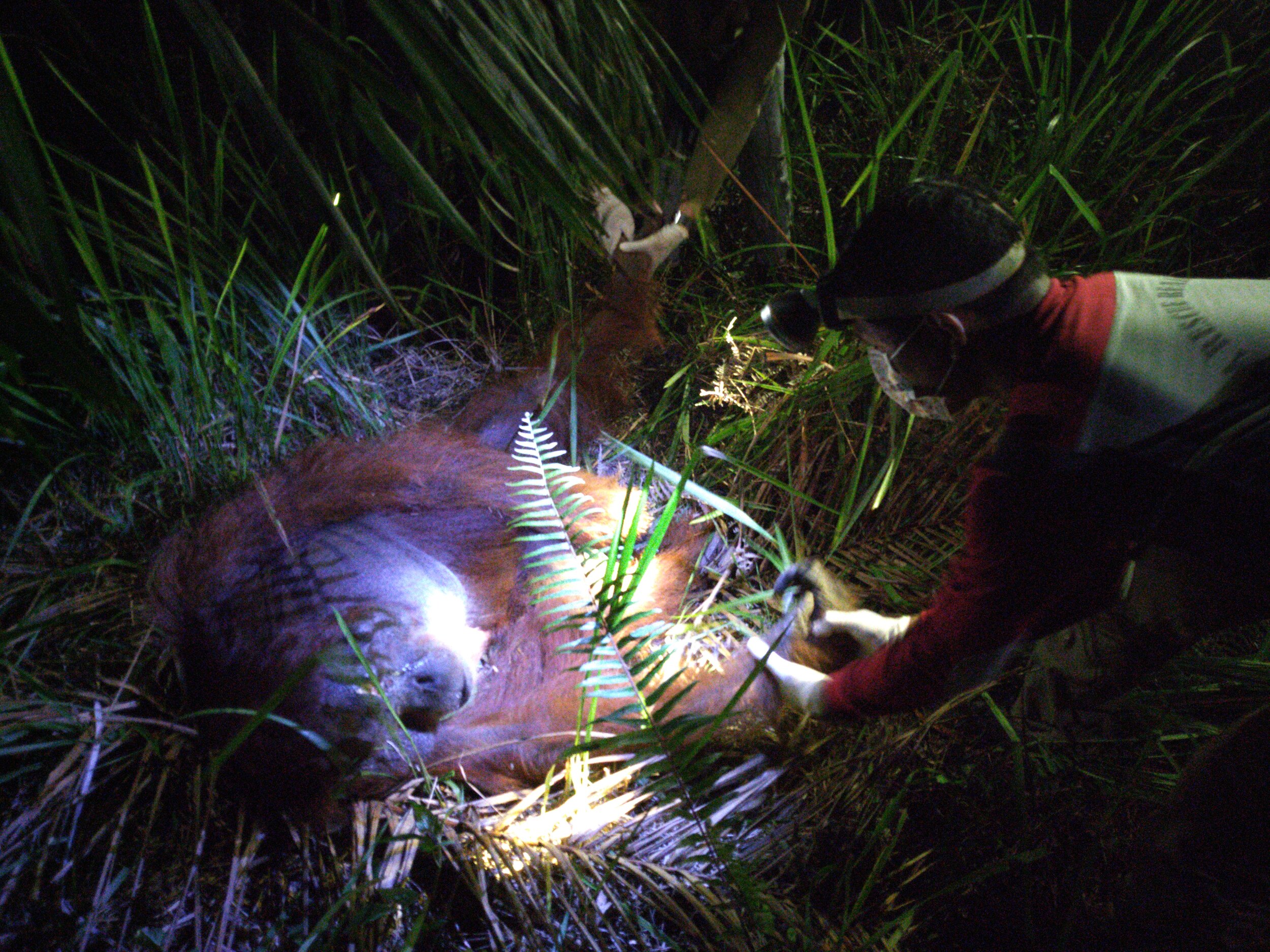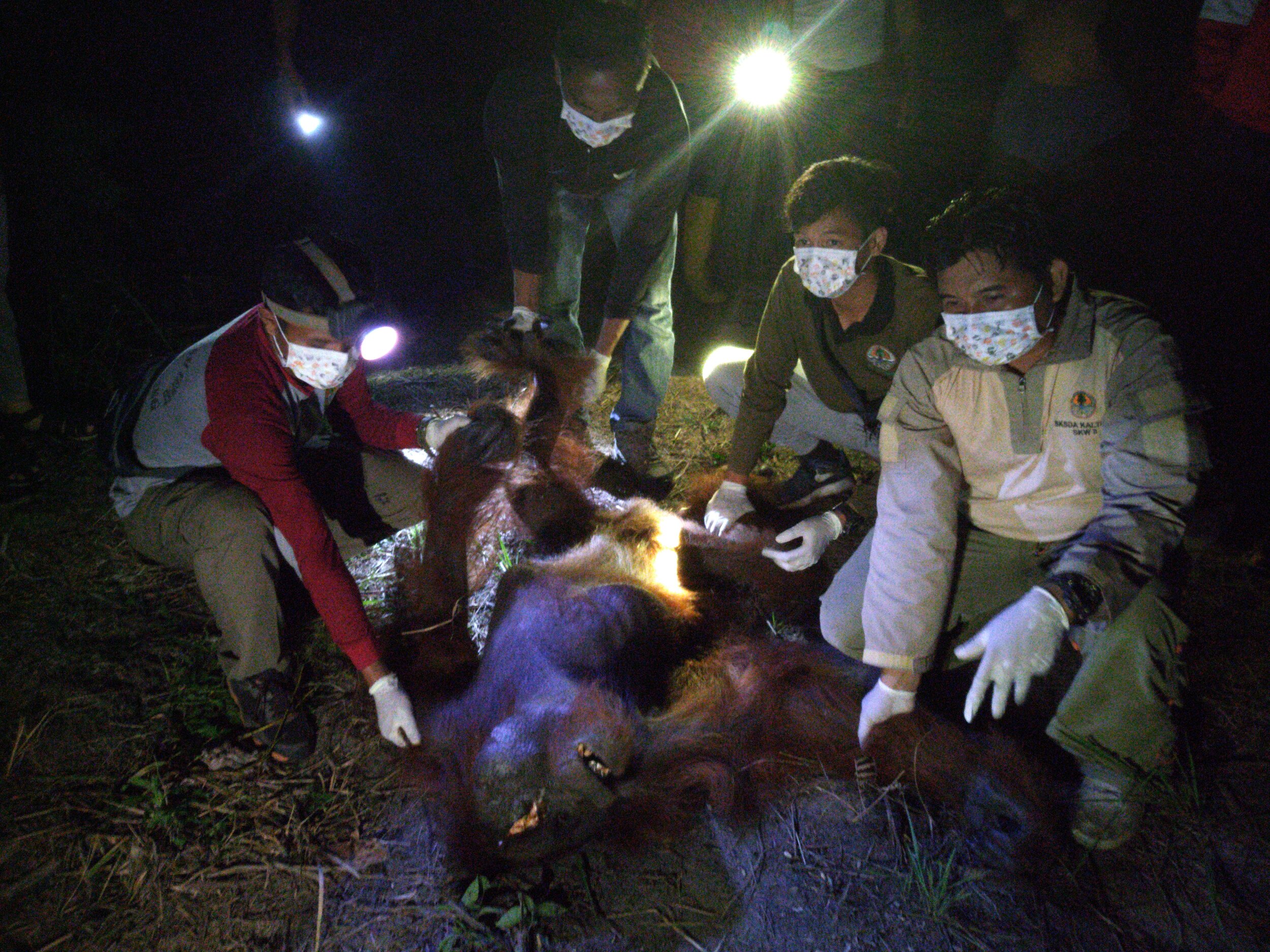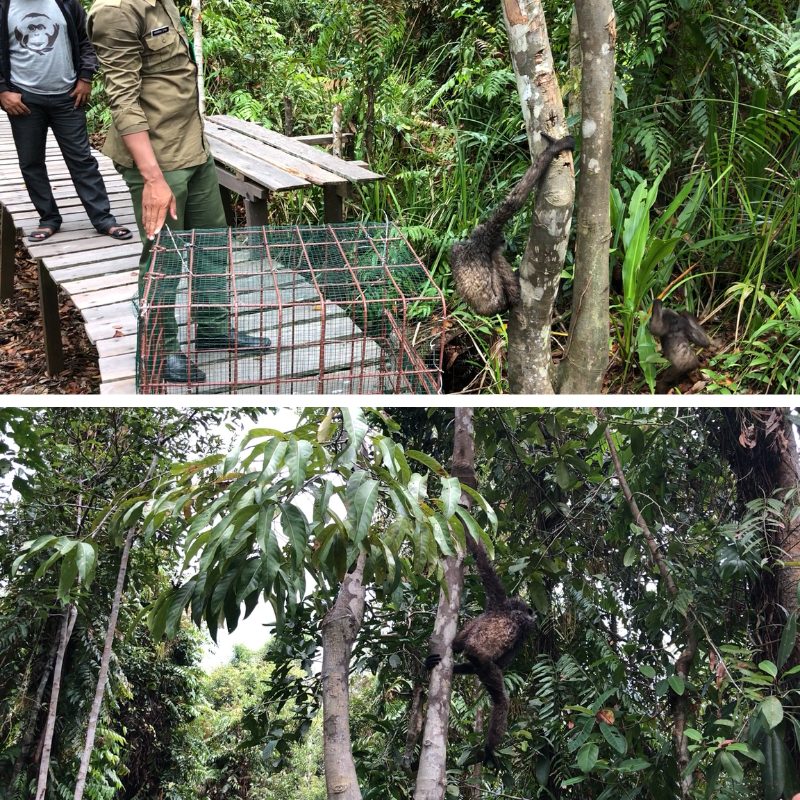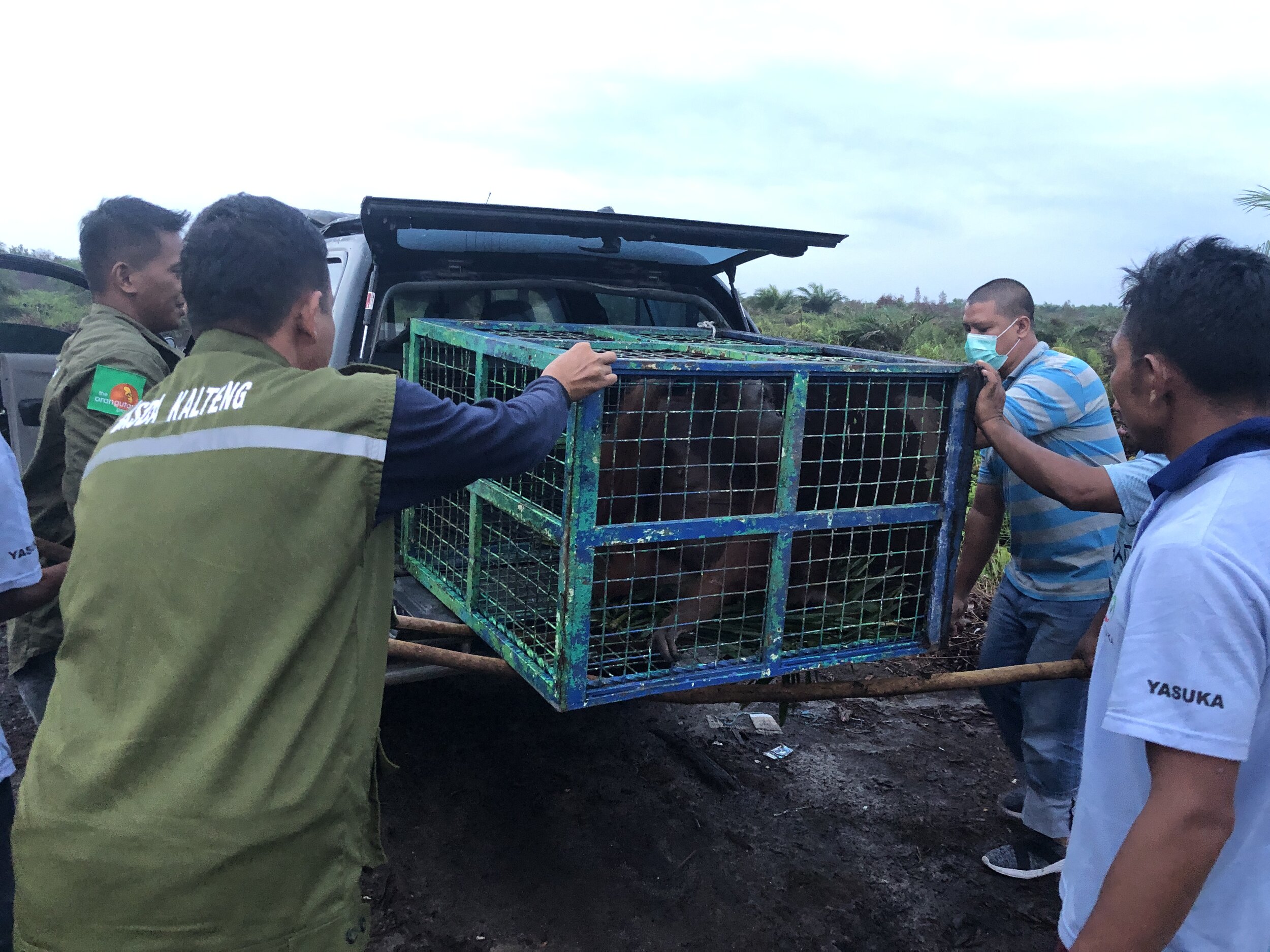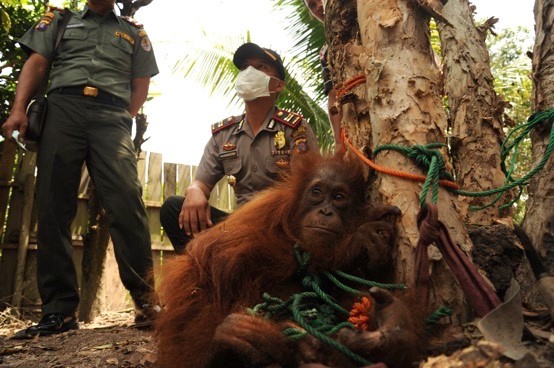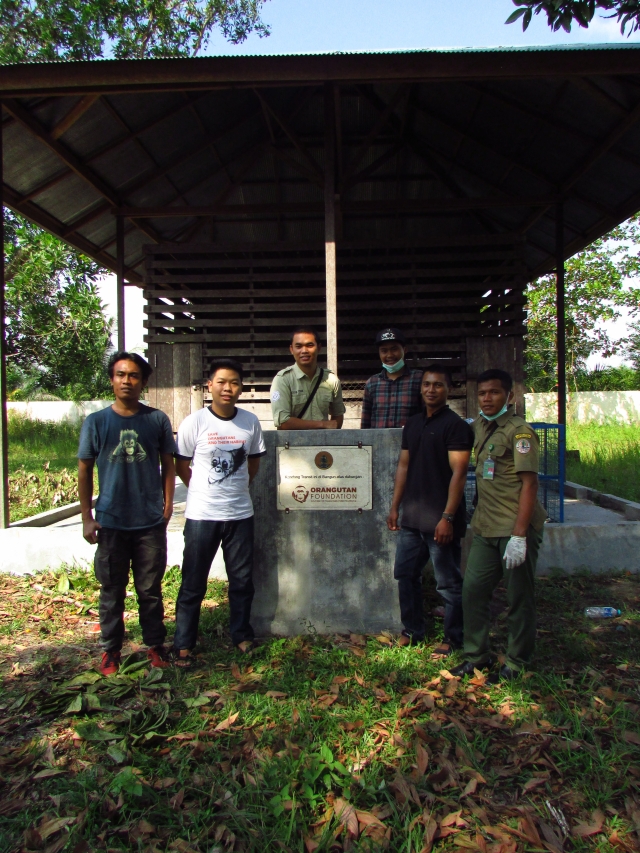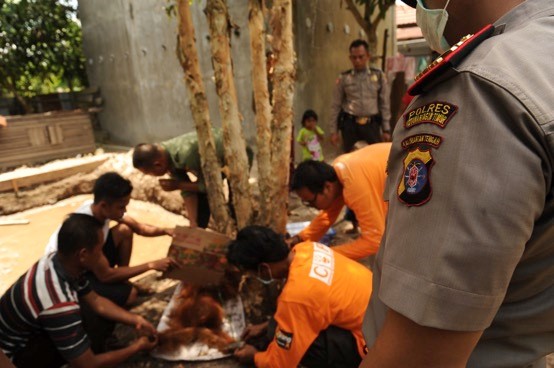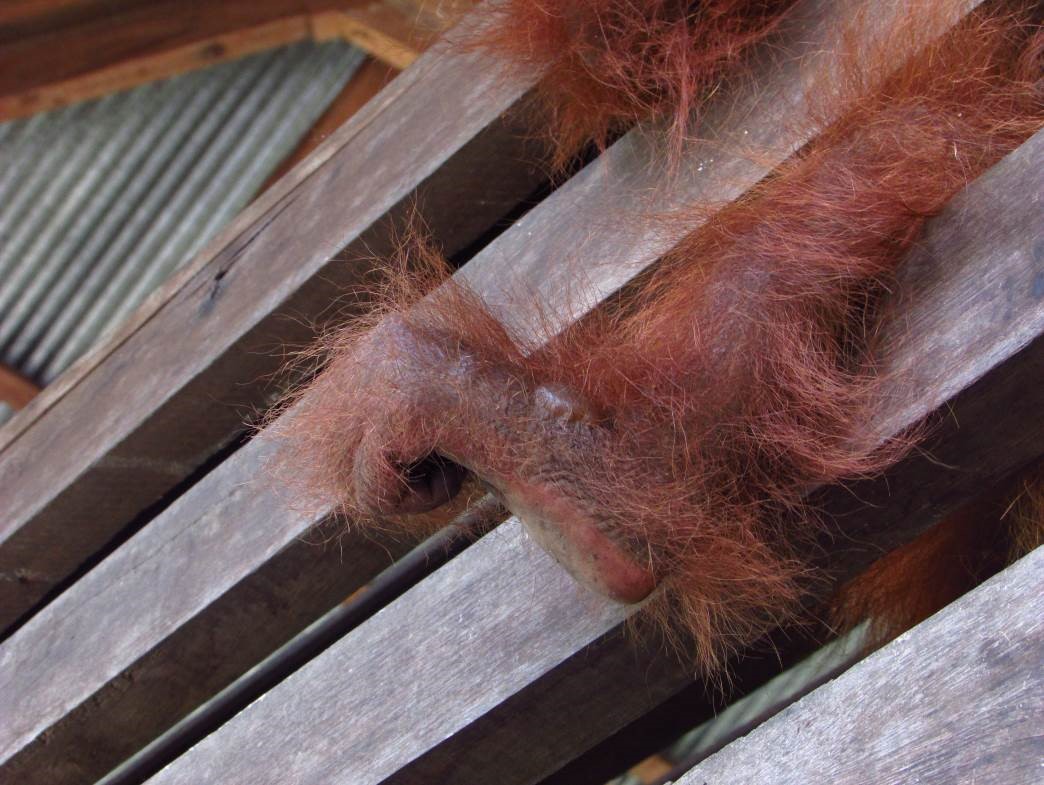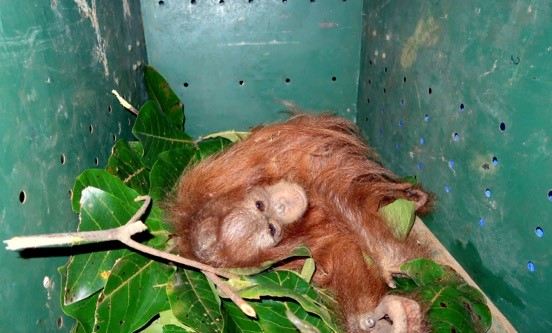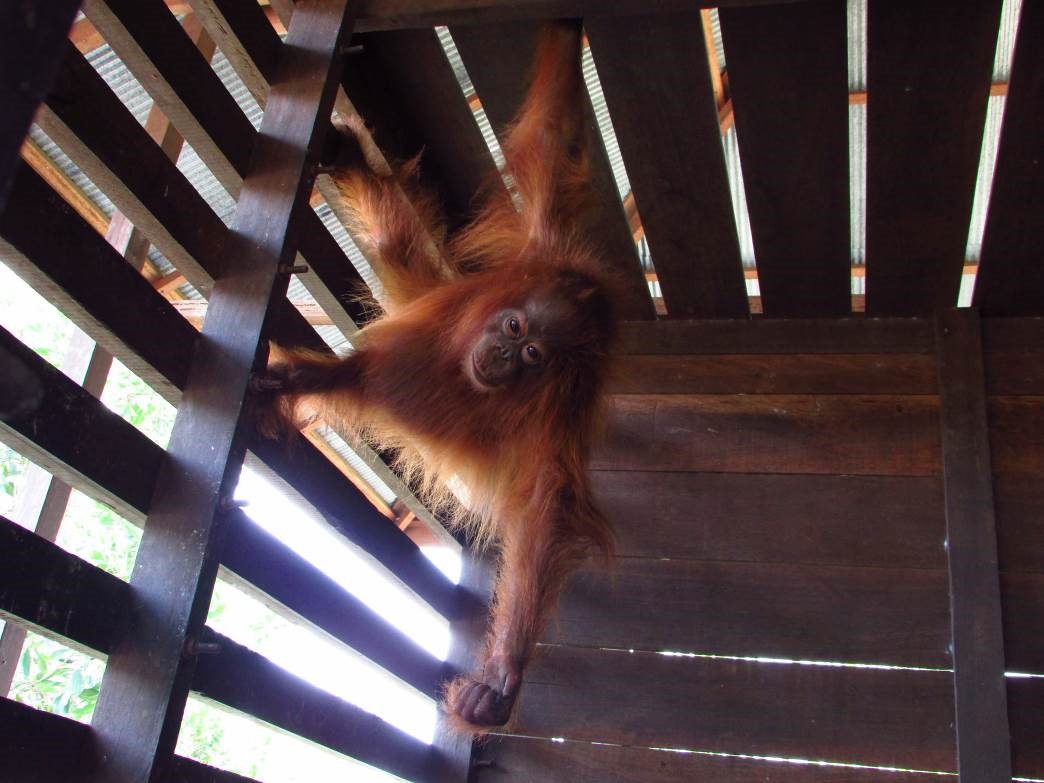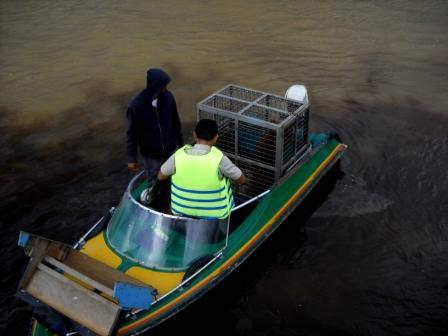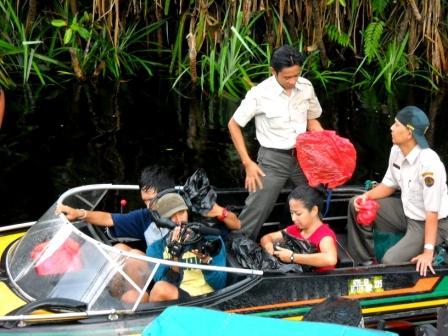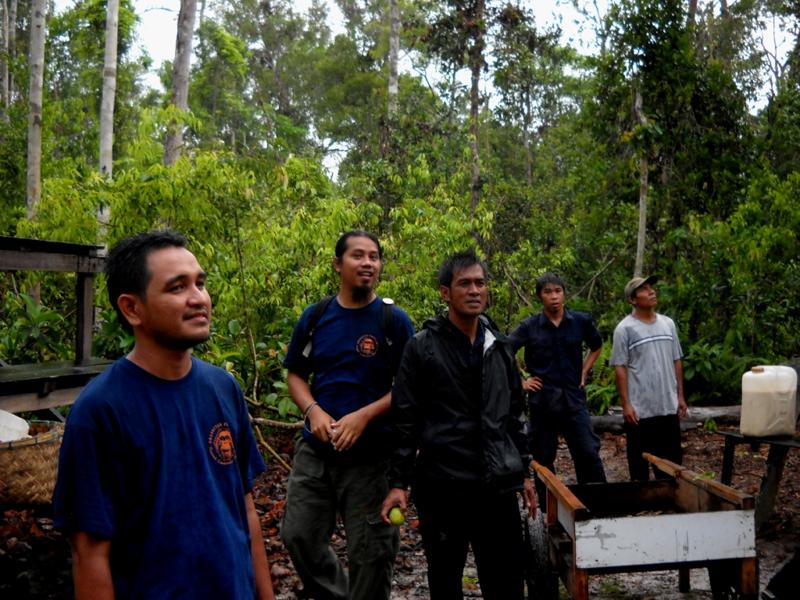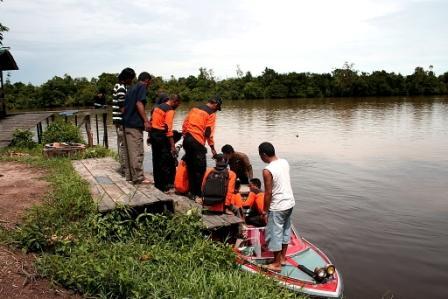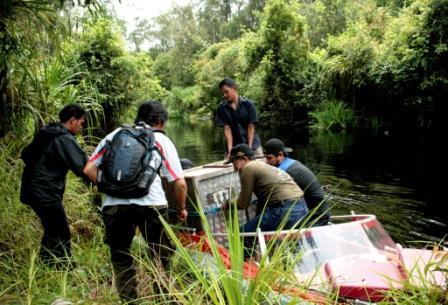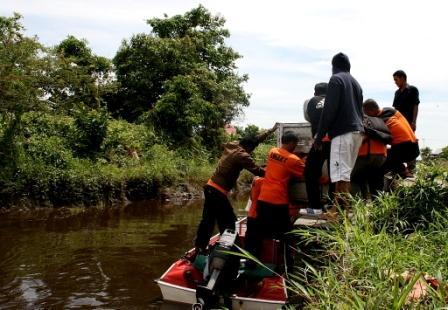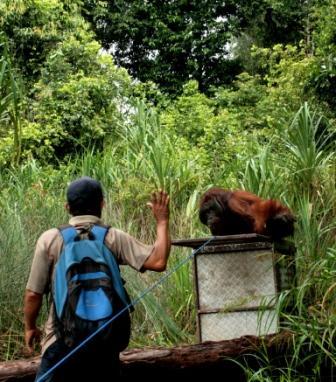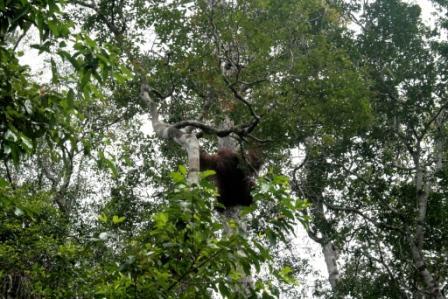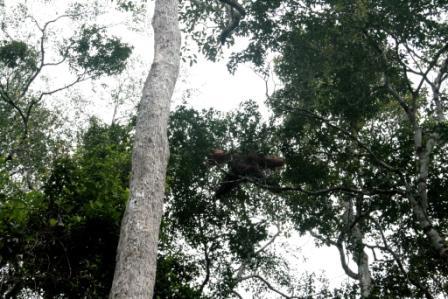On Saturday 30th November, our field team received an all too familiar report. Government officials BKSDA had alerted the team that an orangutan had been found with possible injuries by residents in an area adjacent to an oil palm plantation in Central Kalimantan, Indonesian Borneo.
Arriving at 9pm later that evening following a long journey to the reported site, our rescue team were met by the sound of dogs barking in the distance. They were alerted to the location of the great ape by one of these dogs who was owned by a local employee of the nearby oil palm plantation.
The orangutan is found on the ground before being sedated
On first sight of the orangutan, it was upsetting for our team to see that it was in a great deal of distress. Unlike the majority of orangutan rescues, it was unusual to see that this individual was not in a tree but instead on the ground.
Identified as a male orangutan, who when approached could only move a short distance along the ground due to his very weak state. After spotting multiple injuries on his body, our vet Dr Dimas and the team wasted no time in sedating the male and transporting him to a safer location where he could be examined thoroughly.
Dr Dimas prepares medication for the male orangutan
Weighting around 75kg and at an estimated 25 years of age. The most horrifying of his injuries was a large laceration to his left eye- an injury which will have blinded him.
Once sedated, rescue teams can begin examining the male
Clearly the orangutan had been shot in the past as multiple rifle pellets were found embedded in the skin; in both cheeks, the hip, and in the back of the neck. Sadly a further two larger pellets were also discovered in his left elbow which could have fractured or broken the bones in his arm on impact. Vitamin and antibiotic injections were administered to help fight infection
The orangutan receives a thorough medical examination
The poor condition of the orangutan’s wounds indicted that his injuries may have been made just a few days beforehand. It’s distressing to see that after all this time, incidents of human-wildlife conflict continue to occur.
In collaboration with BKSDA government officials, our team will continue to closely monitor the progress of this unfortunate male at a facility where he can receive essential medical attention. It’s disheartening for the team to witness this individual in such a horrifying condition.


